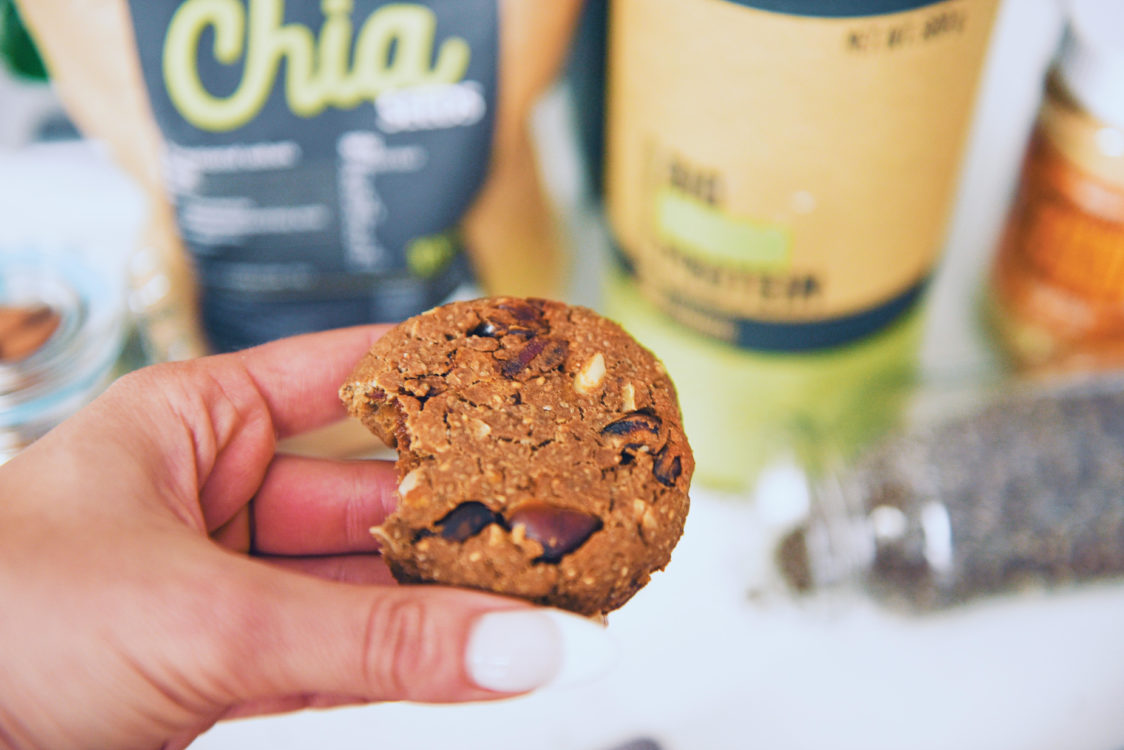Table of Contents
Cravings for something tasty sometimes catch up with everyone. Some people have cravings unexpectedly once in a while, others have them with almost perfect regularity over afternoon coffee. You can try to chase away cravings with vegetables, for example, but somehow we all know that it’s not going to work, and that cucumber just isn’t and will never be a chocolate cake.
Whether you have a regular or occasional sweet tooth, it’s good to know you don’t have to worry about eating sweets. Do you know that you can indulge in a little of something every day without it showing on your weight? So, you don’t even have to give up sweets when losing weight, you just need to be smart about it. Therefore, in today’s article, we will show you some tips on how you can eat sweets and not gain weight.
You can’t outsmart the Intake vs. Output equation
No matter how hard you try, you can’t change the laws of physics. So, the principle will always be that if you take in more energy (calories) than you expend, you will gain weight. If, on the other hand, you consume less calories than you expend, you will lose weight. The only way to maintain your weight is to stick to a balanced calorie intake, which means you have to consume about as many calories as you expend. The intake and output itself is influenced by many factors and the already mentioned sweet cravings can influence to some extent how much energy you will receive. [1]
If you want to learn more about how to calculate your caloric intake, read our article How to Calculate Your Energy and Macronutrient Intake for Weight Loss or Muscle Gain?
How to determine how many calories you should eat?
The easiest way is to enter your data into our calculator, which calculates the approximate recommended intake of calories and individual macronutrients that you should stick to in order to achieve your goal. Consider that the values are only indicative. Each body is different and responds differently to a particular intake. Therefore, you need to monitor your intake and adjust it if necessary to gradually get closer to your goal.
How much energy and macronutrients do you need?
Weightlifting in gym, circuit training in gym, crossfit, bodyweight training, street workout
Hockey, football, volleyball, basketball, floorbal, futsal, tennis, squash, table tennis
TRX, circuit training, body pump, aerobic and other classes led by an instructo’
Running, swimming, cycling, rowing
I lift weights
Weightlifting in gym, circuit training in gym, crossfit, bodyweight training, street workout
I play team or racquet sports
Hockey, football, volleyball, basketball, floorbal, futsal, tennis, squash, table tennis
I do demanding group trainings
TRX, circuit training, body pump, aerobic and other classes led by an instructor
I do endurance sports
Running, swimming, cycling, rowing
To see what a proper energy intake might look like, take a look at the example of the average man and woman:
- The average woman (Ema) is 170cm tall and weighs 65kg. Recommended intake for weight maintenance in case she does not do any sport or move physically: 2040 kcal/day, carbohydrates: 304g, protein: 78g, fats: 57g.
- The average man (Michael) is 180 cm tall and weighs 80 kg: Recommended intake for weight maintenance in case he does not do any sport or move physically: 2344 kcal/day, carbohydrates: 343g, protein: 96g, fats: 65g.
If we calculate that breakfast will make up approximately 20%, lunch 35% and dinner 30% of the daily intake, we will be left with approximately 15% of the total daily intake into which Michael and Emma could fit dessert. That would mean 306 kcal for dessert for Emma and 351 kcal for Michael. In theory, each of them would be able to have approximately 60-70g of chocolate instead of an afternoon snack without gaining weight. The problem, however, is that chocolate does not satisfy hunger for very long. [7]
Thus, they may reach for another snack to stave off hunger, thereby increasing their intake and gaining weight in the long run. The way our bodies work is something to be reckoned with. It certainly doesn’t mean you can’t eat. Get inspired by our 7 tips to find out how to snack smartly without having to cut back on your intake for the rest of the day. Plus, you don’t have to worry about gaining weight or fat.

1. Increase physical activity
As it was said above, the caloric balance applies under all conditions. But this plays into your hands because, in practice, it means that if you move more and burn more calories, you don’t have to worry about gaining weight from eating sweets. And there’s no need to go to an intensive CrossFit training right away. How about combining having a cake with a longer walk from or to a coffee shop or a pâtisserie? You’ll see that you’ll enjoy it all the more. However, if you are not a fan of long walks, you can burn calories with other sports or daily activities. [1]
How many calories can you burn with different activities? [6]
Walking (5.5 km/h) on a straight surface | ||
The caloric value of the average dessert can be somewhere between 200-1000 kcal depending on the size and ingredients. However, if you indulge in some cake exceeding your daily caloric intake, you should walk to the café, shovel snow in the evening and clean up the flat, and thus burn excess calories without any problem, and even lose weight while eating what you like.

2. Replace sugar

If you are a fan of homemade desserts, you have the advantage of controlling the raw ingredients used and the resulting caloric value. Sweets such as buns, cakes or cupcakes are generally high in carbs, mainly simple ones in the form of sugars, and fats. It is therefore not a bad idea to replace, at least in part, those ingredients with a more appropriate alternative. For example, you can try chicory syrup, which has a lower sugar content but also a high proportion of soluble fibre. The sweetness can be compared to sugar, but you should not overdo it, as excessive fibre intake could give you indigestion. [2]
Sweeteners are also a good alternative, which will reliably replace sugar in desserts. For example, you can try erythritol, stevia or xylitol. You don’t have to worry about these sweeteners. They are also naturally found in fruit or in the stevia plant itself.
- 100g sugar has 399 kcal
- 100g of chicory syrup has 155 kcal, 5g of sugar and 71g of fibre
- 100 g xylitol has 247 kcal and 30g sugar
- 100g erythritol has 0 kcal
- 100g stevia has 0 kcal
As you can see, the caloric value of sugar and other sweeteners varies significantly. If you are afraid to use only erythritol or stevia for baking, try replacing at least half the sugar. There is no significant effect on the taste of this mix, but excessive sugar intake might destroy your physique over time.
You might be interested in these products:
3. Replace fatty foods
Another ingredient that almost no dessert can do without is fat. And no wonder. The saying goes: “Where there’s fat, there’s taste.” Although fat is a flavour carrier, again it is not a bad thing to at least partially replace it with a less calorific alternative. For example, if you have 100g of butter in the original recipe, exchange at least half for one of these options. If you skip the butter completely, it could change the taste or consistency. For example, you can use avocado, apple purée, mashed banana, Greek yogurt or pumpkin purée as a substitute. [3]
- 100g butter has approximately 748 kcal
- 100 g avokáda má přibližně 160 kcal
- 100g apple puree has approximately 55 kcal
- 100g banana has approximately 94 kcal
- 100g Greek yogurt (5 % fat) has approximately 95 kcal
- 100g pumpkin puree has approximately 50 kcal
In the same way, you can replace other fatty ingredients in desserts, such as mascarpone or cream. For these cases, for example, ricotta or cottage cheese will do you a great service.
In the same way, you can replace other fatty ingredients in desserts, such as mascarpone or cream. For these cases, for example, ricotta or cottage cheese will do you a great service.
- 100ml 30% cream has approximately 291 kcal
- 100g sour cream has approximately 172 kcal
- 100g mascarpone has approximately 386 kcal
- 100g high – fat cottage cheese has approximately 141 kcal
- 100g low – fat cottage cheese has approximately 68 kcal
- 100g ricotta has approximately 140 kcal
How you replace fatty cream is up to you. In addition, if you sweeten them with a low-calorie sweetener, you have a healthy dessert that can contain half as many calories as the original. You can enjoy a sweet taste of dessert without guild and do not have to worry about your figure.
4. Don’t forget protein

Protein is a macronutrient that most desserts are not full of. This is a pity, as it has the highest thermal effect – around 20-30%. This is the energy that the body must expend to process the macronutrient. Of the 100 kcal, only approximately 70-80 kcal is absorbed into the body depending on the type of protein received. By comparison, the thermal effect of carbohydrates is about 5-10% and fats 0-3%. [4]
If your dessert contains a higher amount of protein, it can easily be considered a balanced snack that you can enjoy virtually every day. And how can you sneak protein into desserts? The first option is to replace some flour with protein, which reduces the carbohydrate content and increases the protein content. However, do not replace the flour in a dessert completely, it could negatively affect the consistency. It is optimal to substitute about a quarter of the flour with protein. You can also add protein into dessert in other ways, such as using coconut flour or legumes.
If you are not involved in the preparation of the dessert and would still like to enjoy it and at the same time deliver all three macronutrients to the body, do it a little differently this time. Instead of having a whole dessert, try to have only half and add skyr, for example.
See how this adjustment affects the resulting macronutrient/calorie ratio:
- 100g of chocolate muffin has approximately 406 kcal, 5g of protein, 50g of carbohydrates and 20g of fat
- 50g chocolate muffin with 100g sugar has approximately 265 kcal, 14g protein, 28g carbohydrates, 10g of fat
As you can see, you do not even need to deny yourself caloric goodies, and you can even make a fairly balanced dessert from them. You just need to think about the amount and replenish the necessary proteins.
5. Share your meal
If you’re going to a coffee shop with your friends, it’s clear that you have no control over the composition of the dessert. Even so, you don’t have to deny yourself. For example, if you want a classic cheesecake, tiramisu or Sacher-torte cake, there is no problem indulging in from time to time without trying a healthier and lighter version. But keep in mind that even in a café you don’t have to eat the whole piece of cake at any cost. How about sharing it with someone. I’m sure a friend would love to indulge in dessert, too, and if each of you eats only half of it, you’ll both save calories. You can push this kind of sharing to the other extreme by getting your girlfriend or boyfriend to order dessert and then just taste it. The first bite is always the best. However, you may not be very popular when using this method. Not everyone likes to share their dessert. [5]
In case you have no one to share the meal with, and yet you do not want to eat the whole piece of cake, eat only one half and take the other half home. If you’re used to having something sweet with your coffee every day, you can eat the rest of the cake the next day, saving calories instead of having other goodies at home.

6. Choose low-calorie desserts
You may not be surprised to learn that different desserts vary in calorie value, and sometimes even by hundreds of calories. But how do we know which dessert adds the least energy to our daily intake?
First try to estimate which desserts are the lightest by weight. Some companies, even write the weight in grams for sweets, which makes it easier. But you can probably tell at a glance that a macaroon is smaller and lighter in weight than a chocolate cake. So try to choose desserts, which weigh the “least”. However, the composition is also important. When it comes to baked goods, try choosing those with a sponge base. Less fat (sometimes no fat) and more carbohydrates are used in their preparation. And since one gram of carbohydrate has 4 kcal and one gram of fat has 9 kcal, lower fat content is reflected positively in the resulting caloric value. What matters is not only the cake base, but also what is in it. A good choice can be various cream cheese icings, fruits or gelatine. Desserts with butter, fatty cream or sweetened condensed milk are definitely more caloric.
If you are not sure what to choose and what the individual goodies consist of, do not be afraid to ask. The service assistant should be informed about what they are selling, so they can help you choose a dessert that is best suited to your goal. And if you’re more into chocolates, bars and biscuits, it’s even easier because you can find out more about the ingredients on the packaging and choose the right option.
7. Prepare individual portions in advance
This tip is especially valid for those who have trouble keeping a lid on eating sweets. If you prepare your own treats at home, there is no point in making large quantities and force yourself to eat it. Get a smaller baking tin that is equivalent, say, to a quarter of a regular tin. This will only give you a few portions, which you can either split for the next few days or freeze for another time to curb munchies. Of course, you can share it with family or friends.
The sweets you buy can be prepared in the same way. If you feel like you can’t control yourself, unpack the biscuits and pack each piece separately in foil, paper bag or empty peanut butter container. Once you’ve eaten one wrapped biscuit, you won’t feel like there’s another one waiting for you in the pack, which will make your mind wonder and stop the compulsive desire to go for another one.

What should you remember?
If you’re trying to lose weight, and you go out for cake with your friends every once in a while, there’s nothing to worry about, and you don’t have to worry about gaining weight. But if you’re watching your weight and showing up at cafés a few times a week, maybe it’s time to rethink your approach to desserts. You can eat sweets every day without it affecting your weight, but you need to be smart about it. If you are making sweets at home, focus on the ingredients. Try replacing at the very least some butter and sugar and add protein instead. Ask about a composition even when you are having dessert at a restaurant. At the same time, pay attention to portion size. Share a larger dessert with your friends or partner or take half of it home. And if you’re having trouble controlling yourself if there are some sweets at home, try dividing foods into portions in advance. Use at least some of our advice, and you’ll see that you can indulge in snacks regularly without having to worry about weight gain.
Do you have any other guaranteed ways to enjoy sweets without negatively affecting your figure? Share them in the comments, and maybe you can help others.
[1] James Hill, Wyatt, H. R., & Peters, J. C. The Importance of Energy Balance – https://doi.org/10.17925/EE.2013.09.02.111
[2] Zacharová a kol. Chicory syrup as a substitution of sugar in fine pastry – https://doi.org/10.5219/890
[3] What Are the Best Substitutes for Butter? – https://www.healthline.com/nutrition/best-butter-substitutes#fats-and-oils
[4] Thermic Effect of Food – https://examine.com/topics/thermic-effect-of-food/
[5] Cleveland Clinic – Mindlessly Snacking (Again)? Try These Simple Mindful Eating Exercises – https://health.clevelandclinic.org/mindlessly-snacking-again-try-these-3-simple-mindful-eating-exercises/
[6] Compendium of physical activities – https://sites.google.com/site/compendiumofphysicalactivities/Activity-Categories/winter-activtities
[7] Glycemic index of milk chocolate – http://www.glycemicindex.com/foodSearch.php?num=2709&ak=detail


Add a comment